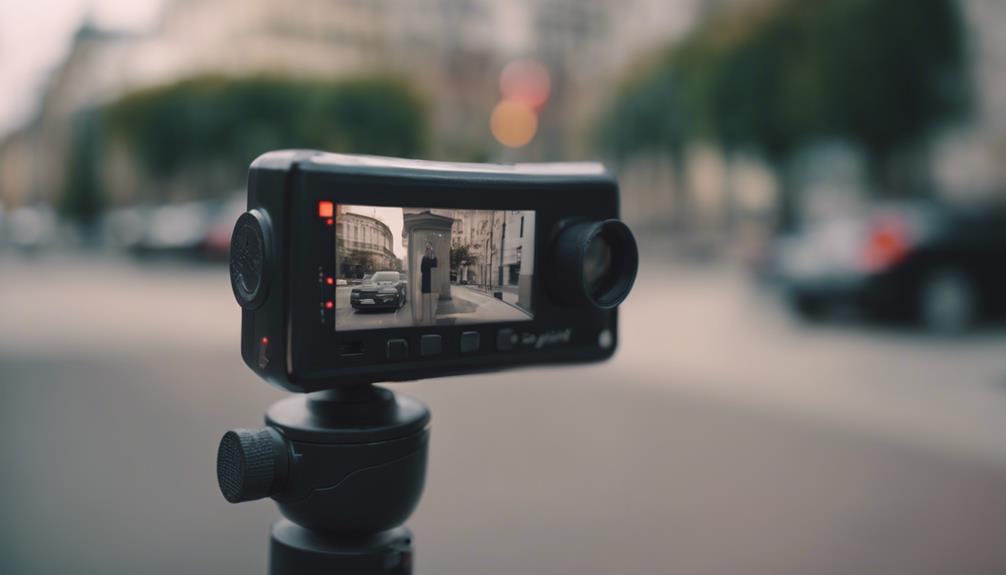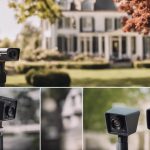To detect spy cameras in your neighborhood, start by learning the basics of how they operate. Then, conduct a thorough visual inspection in common areas, checking for any unusual objects or tiny holes. Utilize a spy camera detector to sweep the area, focusing on potential camera placements. Watch out for unexpected signals like sudden spikes or unusual frequencies. If you suspect surveillance, seek help from professionals or legal advice. Safeguard your privacy by taking informed actions. Remember, staying aware and proactive is key to protecting yourself from unwanted surveillance.
Understanding Spy Camera Basics
To understand spy camera basics, you must first grasp the fundamental principles behind how these covert surveillance devices operate. Spy cameras come in various types, including hidden cameras disguised as everyday objects like pens or clocks, and wireless cameras that can transmit footage remotely. It's important to be aware of surveillance laws, as the use of spy cameras in certain areas may infringe on privacy rights. Understanding the legal implications can help you navigate the boundaries of using spy cameras responsibly and ethically.
When it comes to camera types, there are also body-worn cameras that individuals may use for personal safety or security purposes. These cameras can be discreetly concealed on clothing or accessories, allowing for hands-free recording in various situations. However, it's vital to remember that even with body-worn cameras, there are legal restrictions on where and when you can record audio and video.
Conducting a Visual Inspection
Begin your spy camera detection process by visually inspecting the area for any suspicious objects or unusual items that may indicate the presence of hidden surveillance devices. When inspecting your surroundings, pay close attention to common areas where spy cameras could be discreetly placed, such as smoke detectors, wall sockets, decorations, or any new additions that seem out of place.
Look for abnormalities like small holes, blinking lights, or unusual wires that don't seem to belong. Check for reflections that seem odd or unexpected in mirrors, picture frames, or other reflective surfaces.
During your visual inspection, take your time to thoroughly scan the room from different angles and distances. Use a flashlight to illuminate dark corners or hard-to-reach spots where cameras could be hidden. Remember to inspect both obvious and inconspicuous areas, as spy cameras can be cleverly disguised to avoid detection.
Using a Spy Camera Detector

Utilize a reliable spy camera detector to enhance your surveillance sweep and effectively identify hidden devices in your surroundings. Spy camera detectors work by scanning for radio frequencies and detecting the transmission signals emitted by hidden cameras.
When conducting a sweep, move the detector slowly around the room, paying close attention to areas where cameras could be discreetly placed, such as behind mirrors, vents, or furniture.
These detectors are designed to pick up signals that are commonly used by spy cameras, helping you pinpoint potential privacy invasion. If the detector alerts you to a signal, investigate the source immediately to determine if it's indeed a hidden camera.
Keep in mind that signal interference from other electronic devices or wiring in the walls can sometimes trigger false alarms. It's essential to cross-verify any suspicious signals with a visual inspection to confirm their origin.
Checking for Unexpected Signals
Check for any unexpected signals that may indicate the presence of hidden spy cameras by closely monitoring the readings on your spy camera detector during your sweep. Signal interference is a common indication of hidden cameras, causing fluctuations or unusual patterns on your detector.
Keep an eye out for sudden spikes or drops in signal strength, as these can suggest the presence of a covert recording device nearby.
Hidden cameras may emit signals that are distinguishable from regular electronic devices in your vicinity. When conducting a sweep, pay attention to any unusual frequencies, as they could be a sign of a hidden camera transmitting data.
Additionally, keep an eye on the signal strength and directionality of the detected signals. Sudden changes in signal strength or signals coming from unexpected locations can be red flags for hidden cameras.
Taking Action and Seeking Help

When identifying potential hidden spy cameras, it's essential to promptly take action and seek assistance from professionals with expertise in counter-surveillance measures.
If you suspect that you're being spied on by a neighbor, it's vital to seek legal advice to understand your rights and options. Legal professionals specializing in privacy laws can provide guidance on how to proceed and protect your privacy effectively.
Additionally, reaching out to your community for support can offer emotional reassurance and potentially uncover similar experiences among neighbors.
If you have strong suspicions about the presence of spy cameras, it's imperative to report this to the authorities. Contacting law enforcement or relevant agencies can initiate an investigation and make sure that appropriate action is taken to address the situation.
Remember that dealing with potential privacy violations requires a strategic approach, and seeking help from professionals and authorities is key to resolving such sensitive matters effectively.
Conclusion
To sum up, detecting spy cameras in your neighborhood requires a combination of visual inspection, specialized tools, and vigilance.
By understanding the basics of spy camera technology and conducting thorough checks, you can safeguard your privacy and security.
Remember to stay alert to any unexpected signals or suspicious behavior, and seek help from authorities if needed.
With the right knowledge and tools, you can guarantee that your neighborhood remains safe and secure from potential surveillance threats.

